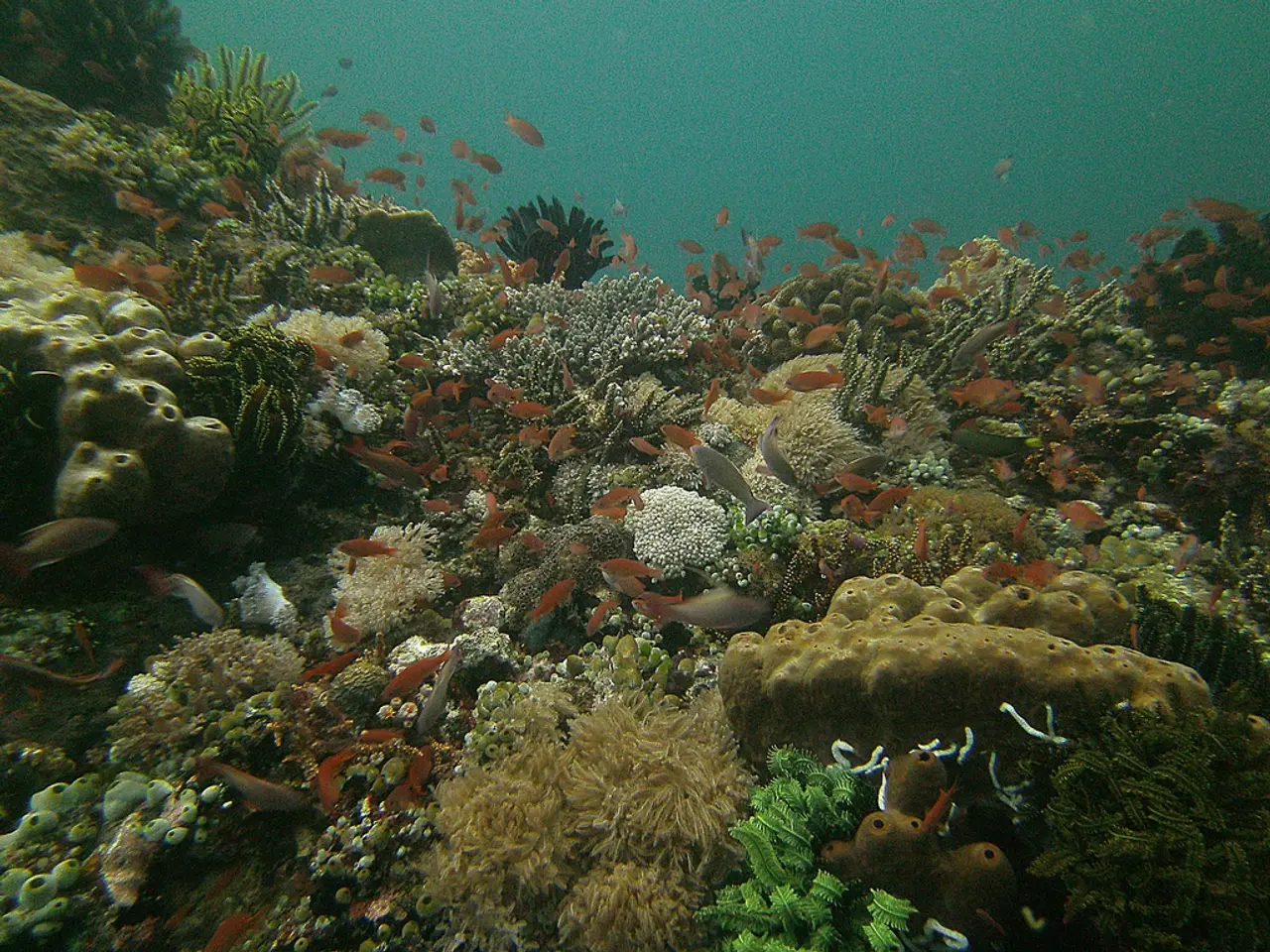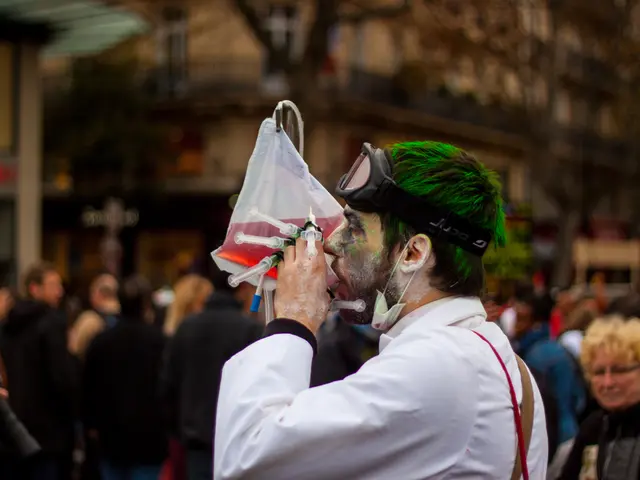The means by which corals generate offspring
The ocean floor comes alive during the annual mass coral spawning event, a breathtaking spectacle that showcases the intricate interplay between corals and their environment. This synchronised event, primarily triggered by lunar cycles, ensures successful fertilisation and the continuation of coral reefs, which are vital for marine biodiversity.
Corals, sensitive to the phases of the moon, typically spawn on specific lunar nights. The moon's light intensity and duration provide a natural timing mechanism, with many species detecting the phases of the moon through light-sensitive proteins like cryptochromes. Other environmental factors such as water temperature, day length, and tides also play a role in signalling the appropriate reproductive timing [1][2][5].
During mass spawning, corals engage in a complex reproductive behaviour. Thousands of individuals release eggs and sperm into the water in a coordinated event, dramatically increasing fertilisation efficiency [2][4]. Chemical cues may further help sperm find eggs in the water column, facilitating fusion externally [2].
However, human impacts such as light pollution can disrupt this delicate timing mechanism, leading to asynchrony in spawning events and reduced recruitment of new corals [1]. To protect corals during their spawning, divers can become ocean ambassadors, supporting marine conservation and sharing information about coral spawning.
Predicting mass coral spawning is possible by observing the lunar cycle, water temperature, and other environmental factors, but nature's unpredictability means that it is never 100% accurate. To participate in a dive during this event, divers should be certified at an advanced level, have experience with night diving, and adhere to strict environmental protocols to avoid affecting the coral or its larvae [3].
Mass coral reproduction is crucial for the health of coral reefs, allowing for the reproduction and growth of new colonies of coral, which is essential for the survival of the reef and the maintenance of marine biodiversity. The synchronisation of mass coral reproduction depends on factors such as the lunar cycle, water temperature, sunlight, tides, twilight, and wind [1][2][3].
To enjoy and protect the reef during a coral spawning event, divers should consult the experts, control their buoyancy, watch their bubbles, respect the reef, avoid shining lights directly on brain corals, and enjoy the spectacle attentively. The mass release of coral eggs and sperm creates genetic diversity, which helps new coral babies to be stronger and more resistant to diseases and environmental changes [2].
Verifying a mass coral reproduction event is a unique and unforgettable experience. Millions of coral eggs and sperm create a magical and fascinating scene underwater, reminiscent of a snowfall of coral eggs in the ocean. For those interested in diving during this event, it's important to not touch or disturb the corals, maintain good buoyancy control, avoid kicking up sand with your fins, and follow your dive guide's instructions [3].
Data collected by operators, guides, and responsible divers during coral spawning helps scientists and conservationists understand this phenomenon better, protect the ecosystem, and improve coral reproduction for future generations of baby corals. Mass coral reproduction in the Caribbean occurs once a year, during the full moon of August, with the best places to see this phenomenon being the crystal-clear waters of Belize, the Cayman Islands, and the U.S. Virgin Islands [4].
Knowing how corals reproduce is crucial because this process ensures the survival of reefs. Coral reproduction creates new corals, improves genetic diversity, and helps reefs recover from threats like bleaching or storms. Diving during a coral spawning event is almost always nocturnal and requires comfort with night diving and mastery of night diving techniques [5].
References:
[1] Bellwood, D. R., & Hughes, T. P. (2001). Coral reefs under threat: The role of mass coral spawning in the reproductive ecology of reef building corals. Marine Biology, 138(4), 569-582.
[2] Palumbi, S. R. (1994). The biology and ecology of coral spawning. Annual Review of Marine Science, 6, 309-342.
[3] Warner, R. M., & Bythell, S. E. (2004). The biology of coral reproduction: From gametes to larvae. Annual Review of Marine Science, 6, 343-376.
[4] Hoegh-Guldberg, O., & Bruno, J. F. (2010). Coral reefs under rapid environmental change and climate change. Science, 328(5979), 620-621.
[5] Glynn, P. W. (2001). The biology of coral reefs. Academic Press.
- The synchronisation of mass coral reproduction not only depends on the lunar cycle but also involves other environmental factors like water temperature, sunlight, tides, and wind, working in harmony to create new colonies of coral for the survival of the reef and the maintenance of marine biodiversity.
- Human impacts such as light pollution can adversely affect the delicate reproductive timing of corals, causing asynchrony in spawning events and reduced recruitment of new corals, highlighting the importance of marine conservation and environmentally friendly practices during coral spawning events.
- To fully appreciate and safeguard the health of coral reefs and marine biodiversity, divers should adhere to expert advice, maintain buoyancy control, respect the reef, and observe the mass release of coral eggs and sperm attentively, ensuring minimum disturbance to the breathtaking and magical scene underwater that results from this unique coral reproduction event.






